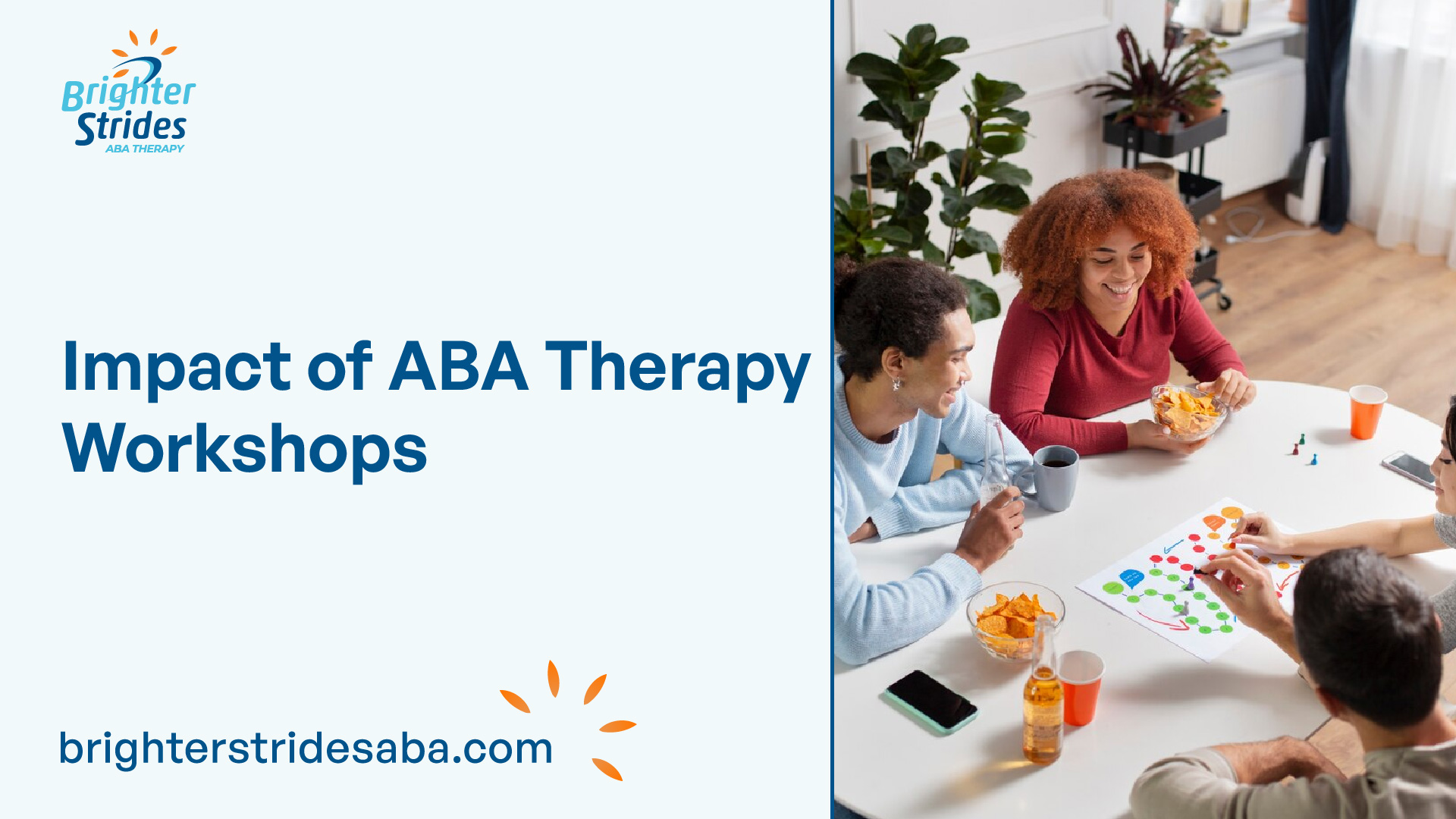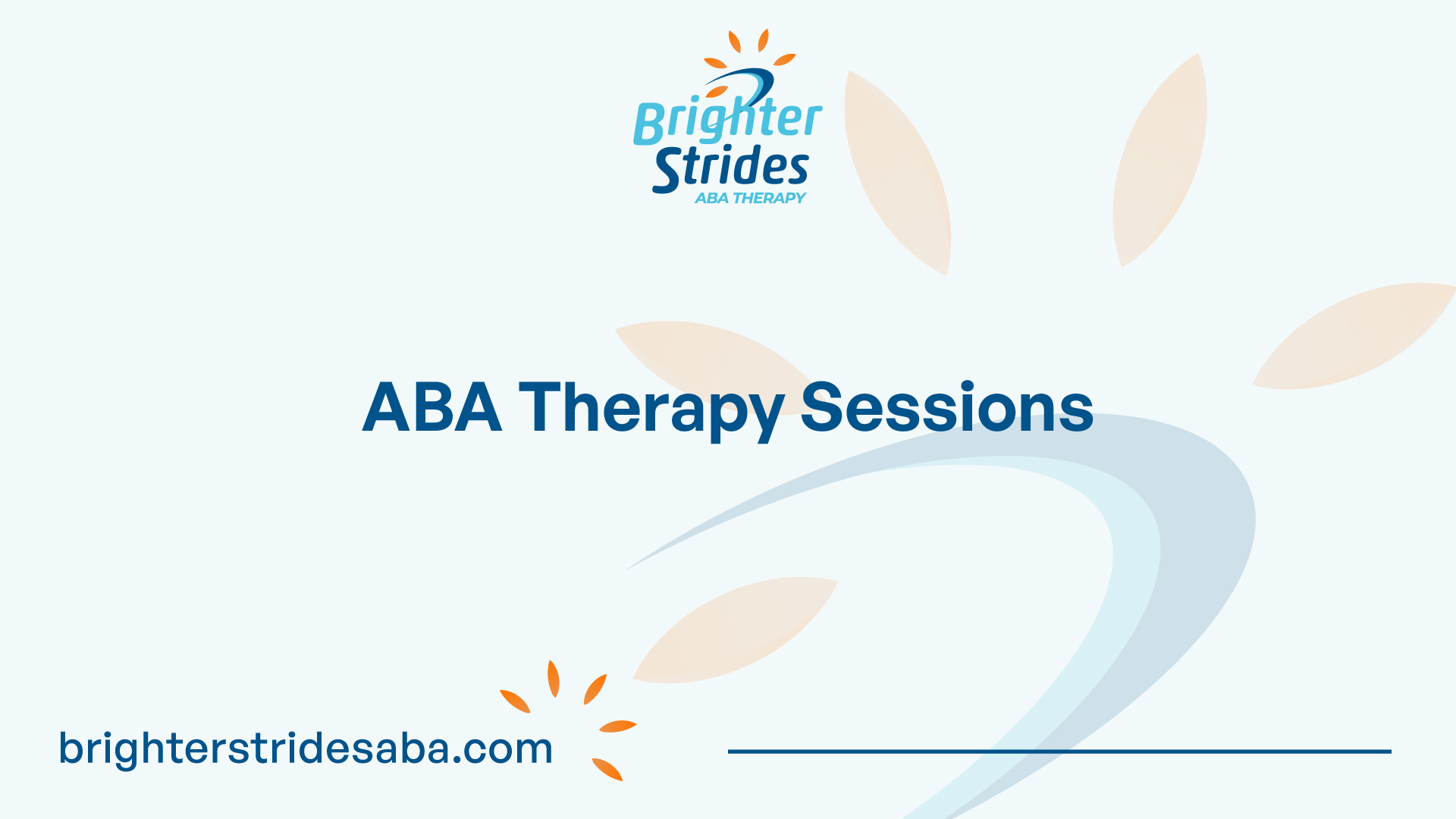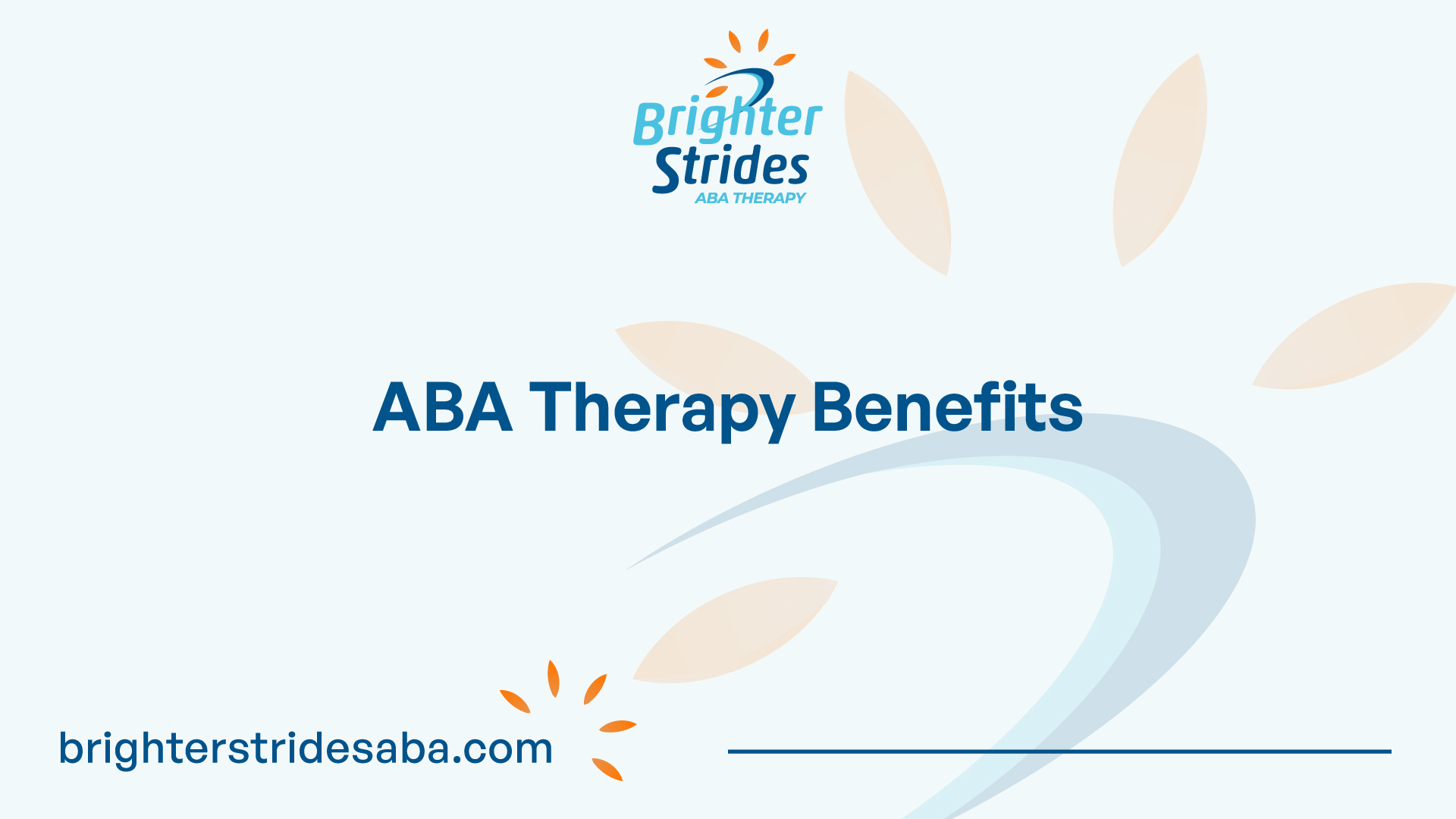
Understanding ABA Therapy
When it comes to addressing the unique needs of individuals with developmental delays or disabilities, ABA therapy (Applied Behavioral Analysis) has emerged as an effective intervention. ABA therapy focuses on improving specific skills such as communication, social interaction, learning, and self-care [1]. By utilizing behavior analysis principles, ABA therapy aims to create personalized therapy plans that promote independence and growth.
Basics of ABA Therapy
ABA therapy is tailored to meet the individual needs of each person, with therapy sessions designed based on a detailed assessment of their skills and challenges. The goal is to address specific goals such as communication, social skills, self-care, and academic achievements. ABA therapists continuously monitor progress and make adjustments to therapy plans to ensure the best outcomes for their clients. This individualized approach allows for targeted interventions that can effectively support the individual’s development.
Principles of ABA Therapy
ABA therapy encourages positive behaviors through a system of rewards and reinforcements. By focusing on positive behavior reinforcement, ABA therapy sets the foundation for more complex skills and social interactions [2]. The therapy utilizes behavior analysis principles, such as positive reinforcement and shaping, to create personalized therapy plans for each individual. These plans are designed to promote independence, improve social interactions, and foster personal growth.
ABA therapy techniques and methods may include various approaches, such as Pivotal Response Training, Natural Environment Training, and Direct Instruction. The specific techniques used will depend on the unique needs and goals of the individual receiving therapy.
Understanding the basics and principles of ABA therapy provides insight into the comprehensive and individualized nature of this therapeutic approach. ABA therapy aims to improve specific skills, promote positive behaviors, and create opportunities for growth and independence. By utilizing behavior analysis principles, ABA therapy has shown to be effective in supporting individuals with developmental delays or disabilities, particularly those on the autism spectrum.
Components of ABA Therapy
ABA therapy (Applied Behavior Analysis) consists of various components that work together to facilitate effective learning and behavior change. These components are designed to help individuals acquire new skills and behaviors. Let’s explore three key components of ABA therapy: Behavioral Skills Training (BST), Discrete Trial Training (DTT), and Naturalistic Teaching.
Behavioral Skills Training (BST)
Behavioral Skills Training (BST) is a widely-used method in ABA therapy that focuses on teaching individuals specific skills and behaviors. It incorporates several components to enhance learning and promote behavior change.
During BST sessions, a therapist provides clear instructions and models the desired behavior. The individual then has the opportunity to practice the behavior under the therapist’s guidance. Feedback and positive reinforcement are important aspects of BST, as they help reinforce correct responses and motivate further skill development.
BST is effective in teaching a wide range of skills, including social interactions, communication, self-help skills, and academic tasks. By breaking down complex behaviors into smaller, manageable steps, BST allows individuals to learn and generalize those skills more effectively.
Discrete Trial Training (DTT)
Discrete Trial Training (DTT) is a fundamental component of ABA therapy, particularly for individuals with developmental delays or cognitive impairments. DTT involves breaking down skills into discrete, structured trials to promote learning through repetition. This method allows individuals to develop new skills by practicing specific tasks in a controlled environment [4].
In DTT, a therapist presents a clear instruction or prompt, and the individual has an opportunity to respond. Positive reinforcement is provided for correct responses, while incorrect responses are gently corrected without punishment. The use of errorless teaching strategies in DTT minimizes errors and maximizes learning opportunities.
DTT is effective in teaching various skills, such as communication, self-care, academic concepts, and social skills. By systematically breaking down skills into smaller components and providing repeated opportunities for practice, DTT helps individuals acquire new skills and promotes generalization to real-life situations.
Naturalistic Teaching
Naturalistic Teaching is an important component of ABA therapy that utilizes everyday events and items in the individual’s environment to teach new skills. This approach aims to promote learning through natural, real-life experiences and interactions [4].
During naturalistic teaching sessions, the therapist creates opportunities for the individual to engage in activities that naturally occur in their environment. For example, teaching social skills may involve role-playing or engaging in conversations during playtime. By incorporating elements of the individual’s natural environment, naturalistic teaching helps generalize newly acquired skills to real-life situations.
This component of ABA therapy encourages active participation, promotes self-initiation, and enhances motivation. It allows individuals to apply their skills in relevant contexts and facilitates the transfer of skills to various settings, such as home, school, or community.
By incorporating these components – Behavioral Skills Training (BST), Discrete Trial Training (DTT), and Naturalistic Teaching – ABA therapy provides a comprehensive approach to skill acquisition and behavior change. Each component plays a vital role in helping individuals develop new skills, generalize those skills, and achieve meaningful progress in various areas of their lives.

ABA Therapy Sessions
ABA therapy sessions are structured and individualized to meet the unique needs of each child receiving therapy. These sessions typically consist of specific components and have a defined duration. Let’s explore the structure and duration of ABA sessions in more detail.
Structure of ABA Sessions
The structure of ABA sessions is carefully designed to promote effective learning and skill development. ABA therapists create a supportive and engaging environment to facilitate the child’s progress. The session structure may vary based on the child’s needs and goals, but it generally includes the following components:
- Initial Assessment: At the beginning of each session, the therapist assesses the child’s current skills and identifies areas that require attention.
- Targeted Activities: ABA sessions involve various activities that focus on the child’s specific goals and areas of improvement. These activities may include behavioral skills training (BST), discrete trial training (DTT), naturalistic teaching, and play-based interventions.
- Data Collection: Throughout the session, therapists collect data on the child’s responses, progress, and behavior. This data helps track the child’s development and informs future therapy decisions.
- Reinforcement: Positive reinforcement techniques are utilized to motivate and reward the child for desired behaviors and achievements. Reinforcement can take the form of verbal praise, tokens, or other preferred rewards.
- Parent Involvement: In many cases, parents actively participate in ABA sessions. They observe and learn techniques from the therapist, enabling them to reinforce skills and behaviors outside of therapy sessions. The involvement of parents is crucial for generalizing learned skills to everyday life.
It’s important to note that ABA sessions are individualized for each child, tailored to their unique strengths, needs, preferences, and traits. Each child’s treatment plan is customized to suit them, making each ABA session unique.
Duration of ABA Sessions
The duration of ABA therapy sessions can vary depending on factors such as the child’s needs, age, attention span, and availability. ABA sessions could range from two to four, or even six hours, although longer sessions are typically more intensive and less common. The specific duration is determined by the child’s requirements and what is feasible for their schedule.
It’s worth noting that ABA therapy is not limited to a single session duration. Some children may have shorter sessions lasting around one hour, while others may engage in longer sessions lasting up to four hours. Regardless of the session length, ABA therapists ensure that children remain engaged and motivated through various activities designed to facilitate learning and skill generalization [5].
The structure and duration of ABA therapy sessions play a crucial role in maximizing the effectiveness of the therapy. By providing a well-organized and tailored approach, ABA sessions can help children develop new skills, improve their behavior, and enhance their overall quality of life.
Importance of Parent Involvement
When it comes to ABA therapy, the involvement of parents plays a crucial role in the progress and success of the child. Parent participation goes beyond attending therapy sessions; it involves active engagement and collaboration with the ABA therapists to create a supportive and consistent environment for the child’s development.
Role of Parents in ABA
Parents have a unique and irreplaceable role in ABA therapy. They are the primary caregivers and have the most significant influence on their child’s daily life. By actively participating in ABA therapy, parents gain valuable knowledge and skills that enable them to reinforce positive behaviors, work on play skills, and continue implementing tools and techniques outside the therapy sessions.
In ABA therapy, parents are encouraged to observe and learn from therapy sessions, providing them with a deeper understanding of the strategies and interventions used. This knowledge allows parents to extend the therapy’s benefits beyond the treatment hours and incorporate them into daily routines and activities. By doing so, parents can create a consistent and supportive environment that promotes the child’s progress and generalization of skills.
Benefits of Parent Participation
ABA therapy recognizes the importance of a collaborative approach, where parents and caregivers are active partners in the therapeutic process. The benefits of parent participation in ABA therapy are numerous and have a lasting impact on the child’s development.
- Holistic Approach: ABA therapy takes a holistic approach to development, focusing not only on the child but also on their support system. By involving parents, ABA therapy offers training and resources, empowering parents to support their child’s progress in various areas, including social interactions, independence, and academic success.
- Promoting Independence: ABA therapy helps children develop independence by encouraging them to engage in tasks and activities on their own. Through techniques like Direct Instruction, Pivotal Response Training, Natural Environment Training, and the Early Start Denver Model, children learn essential skills that foster independence [1].
- Addressing Behavioral Issues: ABA therapy assists children in overcoming behavioral problems by teaching them how to deal with negative emotions and behaviors in a healthy manner. Through techniques such as Natural Environment Training, Pivotal Response Training, and Direct Instruction, children learn positive coping mechanisms and develop strategies to manage challenging behaviors.
- Encouraging Positive Behaviors: ABA therapy focuses on promoting positive behaviors through a system of rewards and reinforcements. By using behavior analysis principles, personalized therapy plans are created for each individual, fostering independence, social interactions, and overall growth.
By actively participating in ABA therapy, parents become valuable advocates for their child’s progress. They gain the knowledge and skills needed to support their child’s development consistently and play an essential role in creating a nurturing environment that fosters positive outcomes.
In conclusion, the involvement of parents in ABA therapy is integral to the success of the child. By actively participating, parents become partners in the therapeutic process, extending the benefits of ABA therapy beyond the treatment sessions and into the child’s everyday life.

ABA Therapy Benefits
ABA therapy offers numerous benefits to individuals receiving treatment, focusing on skill acquisition and generalization, as well as positive behavior reinforcement. These benefits contribute to the overall growth and development of individuals undergoing ABA therapy.
Skill Acquisition and Generalization
One of the primary goals of ABA therapy is to promote skill acquisition and generalization. Behavioral Skills Training (BST), a component of ABA therapy, has shown promising results in facilitating the generalization and maintenance of skills [3]. Generalization refers to the ability to apply acquired skills in different settings and retain them over time. This is particularly valuable for individuals with autism spectrum disorder, as it helps them navigate various environments and situations with confidence.
Research studies consistently demonstrate the effectiveness of BST in promoting the acquisition and generalization of skills across different populations, including children and adults with autism spectrum disorder [3]. By using evidence-based strategies and techniques, ABA therapy helps individuals develop a wide range of skills, such as communication, social interaction, self-care, and academic abilities. These skills empower individuals to lead more independent and fulfilling lives.
Positive Behavior Reinforcement
ABA therapy employs positive behavior reinforcement to encourage the development of desired behaviors. By using behavior analysis principles, ABA therapists create personalized therapy plans for each individual, focusing on promoting positive behaviors and reducing challenging behaviors. This approach lays the foundation for more complex skills and social interactions.
Positive behavior reinforcement involves providing rewards and reinforcements when individuals demonstrate desired behaviors. These rewards can be tangible, such as tokens or stickers, or intangible, such as praise or access to preferred activities. The consistent use of reinforcement motivates individuals to engage in positive behaviors, leading to the acquisition of new skills and the reduction of unwanted behaviors. Over time, individuals learn to independently engage in appropriate behaviors, fostering independence and growth.
ABA therapy recognizes the importance of the individual’s support system in achieving positive outcomes. It extends its benefits beyond the individual, offering training and resources to parents and caregivers. By involving parents in the therapy process, ABA therapy creates a holistic approach to development. This approach focuses on social interactions, independence, academic success, and creating nurturing environments that support and reinforce positive behaviors [2].
Studies have shown that with approximately forty hours of ABA therapy over an extended period, 90% of participants exhibited significant improvement. ABA therapy is considered effective by various organizations and constitutes 45% of therapies that yield long-lasting and observable results. The skill acquisition and positive behavior reinforcement aspects of ABA therapy contribute to its efficacy in promoting growth and development in individuals.
ABA Therapy Conferences
ABA therapy conferences play a vital role in the field, offering professionals and practitioners access to cutting-edge research, methodologies, and evidence-based practices, ultimately improving the quality of care provided to individuals with autism [6]. These conferences provide a platform for attendees to gain valuable insights into the latest research, strategies, and interventions in the field of ABA therapy.
Purpose of ABA Conferences
Attending ABA therapy conferences serves several important purposes. These conferences offer a wide range of educational opportunities through keynote presentations, workshops, and breakout sessions. This allows attendees to stay updated with the latest advancements and gain knowledge about the most effective techniques and approaches in ABA therapy [6].
ABA conferences are also a hub for networking and collaboration. They bring together professionals, practitioners, educators, researchers, and caregivers from various backgrounds, fostering an atmosphere of collaboration and exchange of ideas. This environment leads to new partnerships, research collaborations, and innovative approaches to autism treatment.
Furthermore, ABA therapy conferences often provide continuing education opportunities. Many conferences offer the chance to earn continuing education units (CEUs) or professional development credits. These credits contribute to maintaining certifications and licensing requirements in the field, ensuring that professionals stay up to date with the latest advancements in ABA therapy [6].
Impact of ABA Conferences
The impact of ABA therapy conferences is significant in advancing the field of ABA therapy. These conferences serve as a platform for sharing research findings, best practices, and innovative approaches. The knowledge gained from these conferences informs and shapes the practice of ABA therapy, leading to improved outcomes for individuals with autism.
Top ABA therapy conferences in recent years include the Autism Society National Conference, International Meeting for Autism Research (IMFAR), Autism Education Summit, Association for Behavior Analysis International Annual Convention, National Autism Conference, and European Association for Behaviour Analysis (EABA) Conference, among others. These conferences have made a substantial impact in the field, attracting professionals and researchers from around the world, and contributing to advancements in ABA therapy [6].
By attending ABA therapy conferences, professionals and practitioners can stay at the forefront of the field, enhancing their knowledge, skills, and understanding of the most effective strategies and interventions. This ongoing professional development enables them to provide the highest quality of care and support to individuals with autism and their families. ABA therapy conferences are essential for fostering collaboration, sharing knowledge, and driving progress in the field of ABA therapy.
References
- https://blossomchildrenscenter.com/2021/04/08/top-ten-benefits-of-aba-therapy/
- https://successaba.com/understanding-the-benefits-of-aba-a-comprehensive-guide/
- https://www.abtaba.com/blog/behavioral-skills-training
- https://mindfulsproutsaba.com/blog/best-aba-session-structure/
- https://behavioral-innovations.com/blog/what-happens-in-an-aba-therapy-session/
- https://www.goldstarrehab.com/parent-resources/best-aba-therapy-conferences

 We've just released an article!
Check out our blog!
We've just released an article!
Check out our blog!



